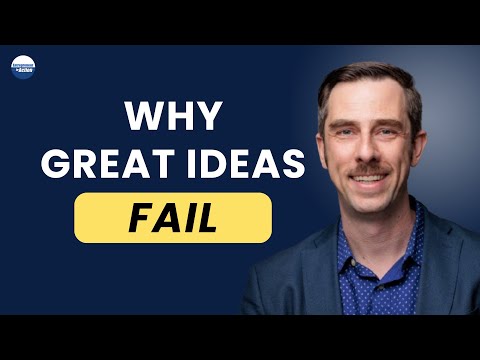Podcast Link: https://www.youtube.com/watch?v=TotwdwCueAk
Why do some of the world’s most brilliant engineers and scientists struggle to turn their groundbreaking ideas into successful businesses?
That’s the question Vladimir set out to answer. As an electrical engineer turned business coach, Vladimir has worked with some of the brightest minds on the planet—people building everything from fusion planes to asteroid mining startups. His mission? To help innovators bridge the gap between idea and impact.
The missing step, according to Vladimir, is deceptively simple but often overlooked: customer connection.
The Problem: Build It and They Might Come
Many technical founders operate under a familiar but flawed assumption: “If I build something amazing, the customers will show up.” But in reality, most innovations, no matter how revolutionary, won’t succeed unless they’re aligned with customer pain points.
“The first question I ask any founder is, ‘Who is your customer?’” Vladimir says. “And usually, that’s not the question they want to hear. They want to talk about how cool their idea is. But business starts with the customer.”
Until that question is answered, you don’t have a business—you have a project.
The Solution: Talk to Real People
Vladimir helps founders evolve their thinking by pushing them to engage in “customer discovery.” This involves informal, open-ended conversations with potential users to understand their emotions, frustrations, and priorities.
Rather than leading with a product pitch, Vladimir recommends asking narrative-driven questions like:
- “Tell me about a recent challenge you faced in this area.”
- “What solutions have you tried, and what did you like or dislike about them?”
- “How would solving this problem change things for you?”
With 50–100 of these interviews, founders can begin to reshape their messaging, identify their ideal audience, and validate whether their solution truly solves a problem worth paying for.
Learning to Sell (Even If You Hate It)
One major hurdle for technical founders? Sales. Many engineers want nothing to do with it. Vladimir gets it.
“I tell people, sales is like surfing,” he says. “You, the surfboard, and the ocean—the market—have to learn to move together. And you only learn by getting in the water.”
For those unwilling to dive in, he suggests finding a co-founder who loves the business side. But for those ready to stretch their comfort zone, he recommends starting with small “baby steps”:
- Practice your 30-second, 3-minute, and 10-minute pitch.
- Record yourself delivering it.
- Start with customer discovery questions before full-blown sales.
It’s not about becoming a perfect salesperson—it’s about learning how to connect, communicate, and listen.
Turning Genius Into Traction
According to Vladimir, the transformation from “brilliant idea” to viable company takes time. In the first 3–6 months, his clients typically gain clarity around their audience, messaging, and value proposition. It might take a year or more to gain real traction and revenue—but it starts with understanding the human side of innovation.
“In the end, sales don’t happen on a slide deck or pitch,” he says. “They happen between two brains. You’re building a human interface between your product and another person.”
Final Thoughts: It’s About Impact
Vladimir’s coaching isn’t just about business. It’s about impact—helping innovators multiply the change they’re trying to make in the world.
“When I coach someone,” he says, “I’m not just helping them with their startup. I’m helping them build a better interface between their ideas and the people who need them most.”
Want to Learn More?
Vladimir offers a free discovery session for scientists and engineers ready to turn their tech into traction. Get started today!

